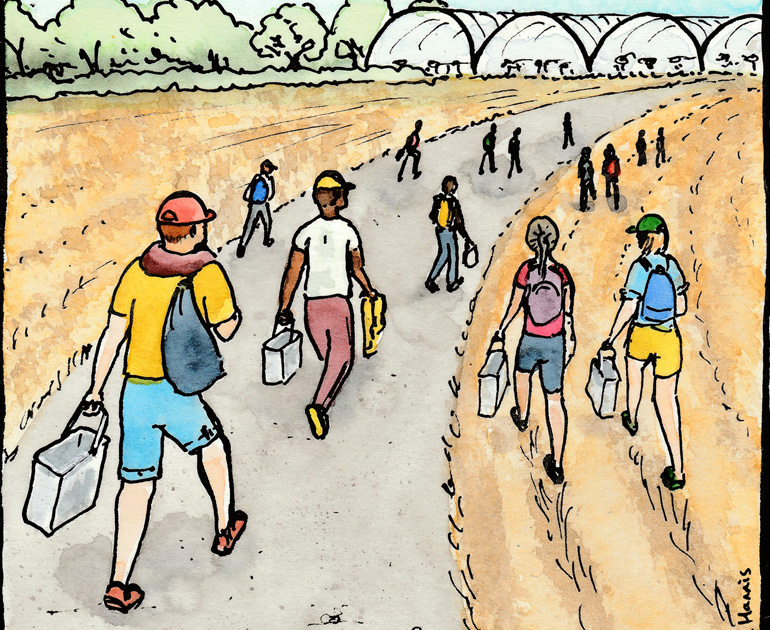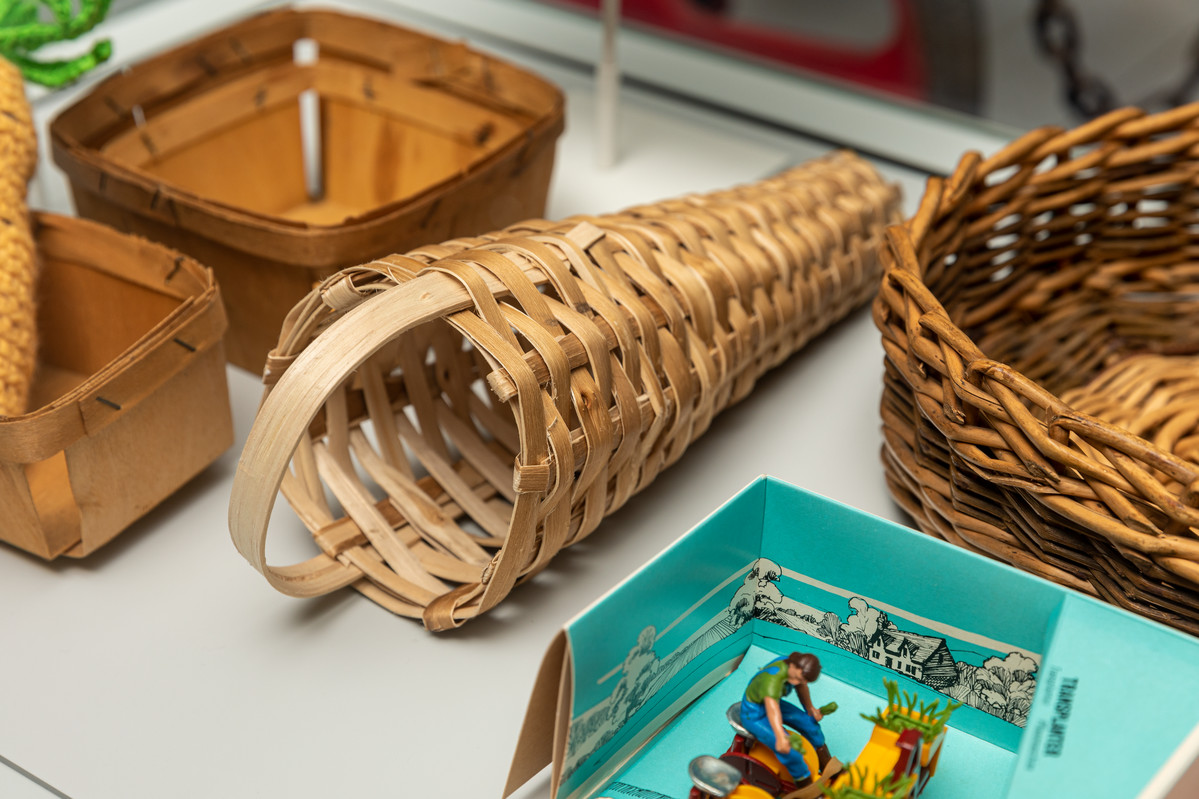Feeding the Nation: Serving us our strawberries
Summer is with us again. Wimbledon is underway. The sparkling wine is in full flow. Generous servings of strawberries and cream are being eagerly consumed by an excited audience of tennis fans. And here at The MERL we’ve served another ace, bringing you the latest installment in our series of online exhibitions about migrant workers in UK farming. This time, the display follows the journey of British strawberries from harvest to distribution, with striking illustrations by artist Sarah Hannis capturing the complexity of summer work on a strawberry farm.

Caring for the people that care for our food
As with the previous exploration of raspberry planting in winter, Sarah’s evocative images link to research completed as part of a timely and important project called Feeding the Nation, which has done much to shed light on this little-known aspect of UK farming. You can find out more about this project and its impact in a previous blog by the researchers involved.
Timely the project’s work very much is, given the wide-ranging impacts of departure from the European Union, COVID-19, and the rising costs of energy and other resources we all now face. With these complex factors at play, and price hikes faced by farmers and by the food system as a whole, this feels like an industry at break point and struggling to proceed to the next round.
Newspaper reports tell us that the price of a serving of strawberries at Wimbledon this year has not risen with inflation. Yet costs faced by growers have gone up staggeringly. Happy tennis punters may not be paying much more for their punnets, but others are undoubtedly feeling the bite. On the plus side for migrant labourers, much of this rise reflects a remarkable 38% uplift in the cost of staffing, stemming from new rules governing seasonal wages. However, with supermarkets trying to avoid resorting to cheaper overseas imports, consumer spending appears to be curtailing the degree to which point of sale costs are also able to increase.

All of this is arguably good news for those of us who want to buy soft fruits or to avoid further impact on the environment. After all, in our climate-damaged world, none of us want to eat foods that have been produced or brought to us in unsustainable ways. However, the net result is that differences in cost are largely being absorbed by strawberry farmers, some of whom might well be driven out of business by the time we get to close of play. In this sense, the migrant workforce, in spite of their rising wages, will probably lose out either way; without farmers to offer seasonal opportunities, there is no work to play for in the first place.
The future of strawberry production
With climate breakdown another key player among the list of top seed challengers in this complex market, we’re looking at a very different future for where and how we grow our strawberries. Indeed, with many foodstuffs—possibly strawberries included—we may need to get used to sourcing things from different regions. In some cases, we’ll probably have to switch varieties or possibly even product altogether.
The implications of this on what we eat and drink, and how we think about it, may be more profound than we imagine. Mindful as we increasingly are of where food comes from, and careful as we have become about checking food miles, we may soon be thrust into a world of products coming from unfamiliar places. For example, the rising quality of sparkling wines from the south of England (no doubt some of which are being quaffed by Wimbledon watchers) attests to not only the movability of wine-making skills, but to the warming climate more commensurate to production of a tasty tipple.

Alongside a deep history of the movement of people and skills across national borders, we now have the prospect of fresh tensions emerging in the relationship of foods to specific regions. Food traditions often have at their heart a notion of place. Much like the linking of craft skills to particular localities, the very idea of some kind of protected designation of origin or protected geographical indication suggests a fixity of produce and a strict sense of local history underpinning food products.
The problem here is that much like craft skills, which are mobile and can be learned and shared with others from elsewhere, both the produce and the products themselves, and indeed those with the skills to produce them, are able to migrate and move from place to place. The end game might be rained off for now, but the centre court challenge of our food futures demands that we both celebrate the idea of the local but also prepare ourselves to be adaptable to new food systems and food security solutions that reach farther afield.
Match point?
So, what now for our humble strawberries? As you tuck into your own seasonal treats, spare some thought for the degree to which we rely on skilled labour from other places to support and serve us with the British food that we want. And do what you can to support a workforce whose match fitness is not in question but whose industry future is dangerously uncertain. If we don’t wake up to the challenge of these intersecting issues, it’ll be game, set, and match for British soft fruits.
Visit our latest online exhibition and learn about the life and work of migrant labourers on a strawberry farm, or follow this link to find out more about the pottle baskets from another online exhibition.
